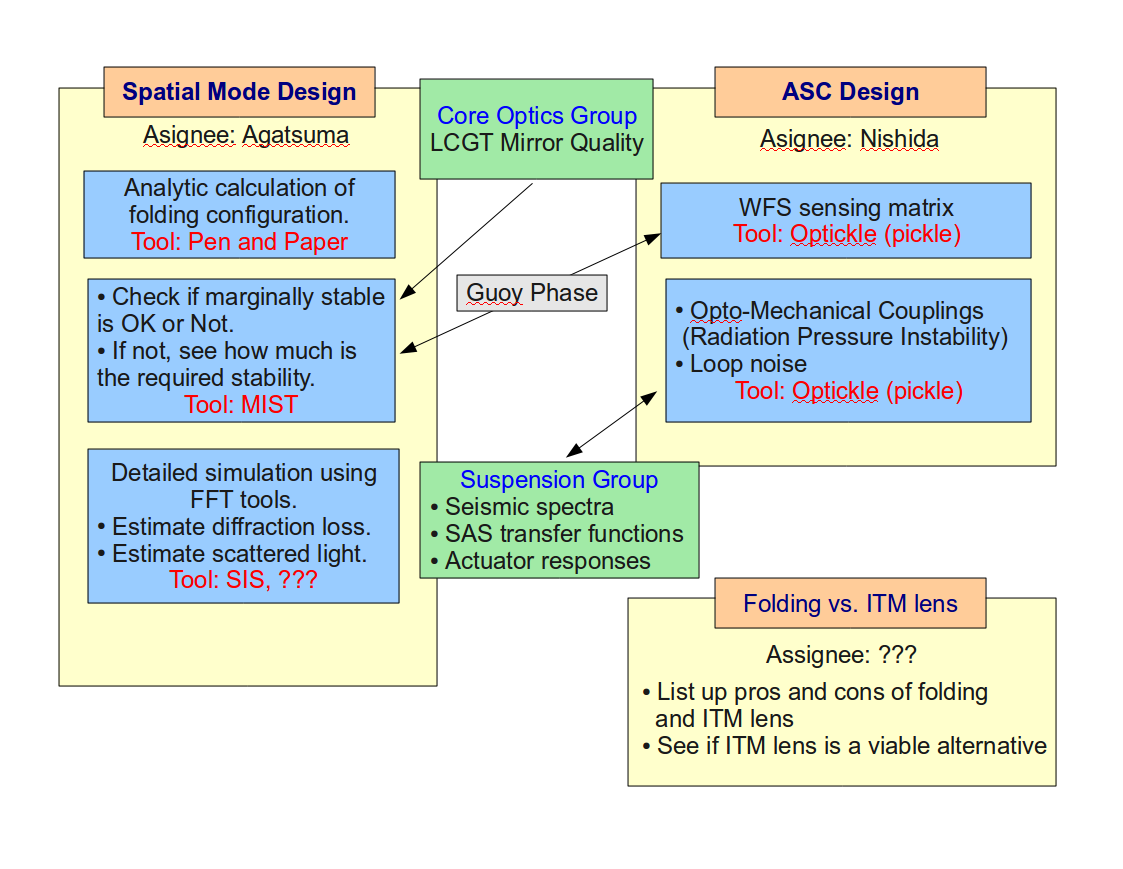Spatial Mode Design & Alignment Sensing
The purpose of this task is to decide on the cavity g-factors (for the RCs and the arms), and then build a robust alignment sensing and control scheme.
Back ground of the task
It has been always a headache for the first generation large IFOs to have a marginally stable power recycling cavity. Because it is only marginally stable, many higher order modes can resonate in the PRC. Then only a small deformation or imperfection of the arm cavities can scatter the light into higher order modes and degrade the dark port contrast or the carrier-sideband overlap.
In order to mitigate these problems, it is desired to have a stable PRC and SRC. In order to do this, however, we have to answer several questions.
(1) How do we make the RCs stable ?
(2) How stable do we want to make the RCs ?
The well known answer to the first question is folding of the RCs. Another possibility is to put a curvature on the AR surface of the ITMs so that they act as lenses. One important task of this group is to evaluate advantages and disadvantages of these schemes.
The second question relates to the WFS signals. If the RCs are too stable, TEM01 or TEM10 modes cannot resonate in the RCs. In this case, the WFS signals from the arm cavities, which make use of the TEM00 and TEM01/10 interference, are strongly suppressed. Therefore, we have to hit a balance between the stability of the RCs and the WFS signal strength.
Task List

